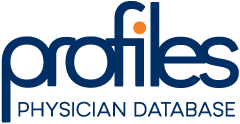Recruiting physicians and advanced practice providers is a high-stakes exercise. Each vacancy represents lost revenue, additional strain on care teams, and a ripple effect on patient access. To ground the impact: a single physician can generate roughly $6,517 per day; with a median time-to-fill near 126 days, one opening can easily exceed $821,000 in lost revenue before you factor in overtime, locums coverage, or delayed service lines. The message from the session was clear; most recruitment “nightmares” are preventable when you tighten a handful of fundamentals.

1) Strengthen Sourcing Beyond “Post and Pray”
Recruitment problems often start with shallow pipelines. Over-reliance on a single channel or waiting for candidates to come to you slows everything down, especially for in-demand specialties. High-performing teams diversify outreach and accept that converting passive clinicians typically takes 7–10 touchpoints (and often more).
Start with intent. Define the attributes of your ideal hire, then build a highly targeted initial list and personalize outreach based on what you learn from each profile. From there, widen your net through email, text, and phone outreach, targeted mailers, digital campaigns, attendance at the right career fairs and specialty conferences, and light-touch event strategies such as lunch-and-learns. Don’t treat one conversation as a dead end. Maintain a clean, living pipeline that includes silver medalists, previous applicants who now meet requirements, residents and fellows who aren’t ready yet, and even medical students. A simple, recurring touchpoint plan keeps you top-of-mind when timing shifts.
Automation helps. Sequenced emails and reminders reduce manual follow-up and ensure passive candidates don’t slip through cracks freeing your team to focus on higher-value conversations.
2) Communicate Like Momentum Depends on It—Because It Does
Great candidates disengage when communication stalls or expectations are fuzzy. Ask for each candidate’s preferred channel at the start and use it consistently. Lay out the process in plain terms—who they will meet, the steps, the timeline, and when they can expect updates. Share what you can up front in job descriptions (scope, schedule, procedures, compensation structure, incentives, relocation, CME) so both sides save time. And if an internal step slows, say so. A brief check-in that acknowledges a delay preserves trust and keeps you in the running when competing offers appear.
3) Standardize Screening and Interviews to Move Faster—and Fairer
Disorganized interviews and long gaps between steps are where strong candidates disappear. A structured process with common core questions for each role (adjusted by specialty as needed) makes comparisons fairer and decisions quicker. Use a simple rubric to score the same competencies across candidates (communication, teamwork, clinical reasoning, leadership potential) so feedback isn’t reduced to “gut feel.”
Training matters. Everyone who interviews, even clinical leaders, should understand the structure and how to use the rubric. Virtual interviews are your friend for early stages; reserve site visits for finalists. Quick post-interview huddles the same day help align feedback and keep momentum.
4) Build Retention Into Recruitment
Pushing a misaligned candidate through “just to fill the role” costs more later. The return on recruitment shows up when people stay. Pair tightly with HR and leadership to understand why clinicians leave and why they stay. Exit interviews, stay interviews, and brief pulse surveys yield practical insights you can apply to screening, messaging, and offers.
Go beyond the CV. Talk about long-term goals, preferred practice environment, and how a candidate defines success. Community fit is often as decisive as job fit, particularly for relocations. Be transparent about mission, culture, and community impact as clinicians increasingly weigh these alongside compensation.
5) Give APP and Allied Health Recruitment Equal Rigor
APPs and allied health professionals are central to patient access and experience, yet these searches can receive less attention than physician roles. Apply the same brand storytelling, sourcing discipline, and retention planning tailored to APP career paths. Build relationships early with training programs by offering real value (skills workshops, interview prep, CV reviews). Highlight what matters to APPs: clinical autonomy, voice in decision-making, clear growth pathways, and a genuinely supportive practice environment.
6) Let Data Drive the Next Improvement
If you aren’t measuring it, you’re guessing. Track time-to-fill, source effectiveness, interview-to-offer ratios, candidate engagement by channel, retention metrics, and ROI on tools. Just as importantly, watch the time that elapses between milestones. That’s where bottlenecks hide. When you find a slow step, assign ownership and redesign it. An ATS/CRM makes this sustainable by centralizing data, automating routine touches, and turning insights into workflow changes. Small, continuous adjustments compound into faster fills and better experiences.
A quick pulse check
Ask yourself: Can we show a candidate our timeline on day one? Do we reach passive clinicians with enough multi-channel touchpoints? Are interviews structured and scored the same way for everyone? Do we use stay/exit insights to shape offers and messaging?
Where PracticeMatch Comes In
If you’re ready to move from reactive to strategic physician and APP recruitment, PracticeMatch can help. Our data-rich sourcing tools, targeted digital outreach, robust career fairs, and practical automation are built to expand your pipeline, personalize outreach, and shorten time-to-fill without sacrificing the candidate experience. From early relationship-building with residents and fellows to structured follow-ups and multichannel campaigns, we help you keep momentum at every stage.
Missed our webinar? View it on demand here.
Let’s zero in on your bottlenecks and map the next step. Visit PracticeMatch to connect with our team and see what smarter, data-driven recruitment can look like for your organization.
